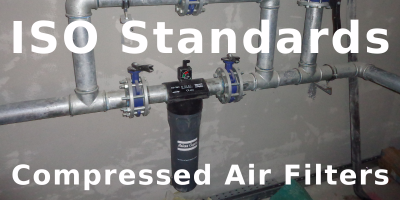
Compressed air filters are essential components in various industrial and manufacturing processes. They ensure that the air delivered to machinery and tools is clean and safe, optimizing performance and extending equipment lifespan.
Understanding how these filters work and how to select them according to ISO standards is crucial for maintaining system efficiency and compliance with industry regulations.
The Role of Compressed Air Filters
Compressed air filters remove contaminants such as dust, oil, and water vapor from compressed air. This treatment is crucial across multiple applications, from automotive assembly to pharmaceutical manufacturing.
The presence of impurities in untreated compressed air can lead to equipment failure, production downtime, and substandard product quality.
How Compressed Air Filters Function
Compressed air enters the filter, passes through a media that traps particulates and contaminants, and exits as clean, treated air. Filters vary in design and efficiency, tailored to specific industrial needs—some focus on basic particle removal, while others are sophisticated enough to coalesce aerosols and vapor.
A detailed look at compressed air filters can be found on my compressed air filters page.
Understanding ISO Standards for Compressed Air Filters
ISO 8573 is the primary set of standards governing compressed air quality. It categorizes air purity levels required across different industries and applications. Understanding these standards is essential for selecting the appropriate air filters for your needs, ensuring your compressed air system operates efficiently and meets regulatory requirements.
Selecting the Right Compressed Air Filters
Assess Your System Requirements
Know your system's flow rate, pressure level, and the specific contaminants you need to control. This assessment will guide you in choosing filters that can handle your system's capacity and contamination type effectively.
Match Filters to ISO Standards
The ISO 8573 standard specifies various levels of air cleanliness, from general industrial applications to critical environments like food processing or pharmaceuticals. Select filters that meet or exceed the ISO class required for your operations to ensure compliance and efficiency.
Consider Filter Types and Their Functions
Particulate Filters: Designed to remove solid particles such as dust and pollen.
Coalescing Filters: Effective against oil and water aerosols, crucial for protecting downstream components and ensuring clean air output.
Activated Carbon Filters: Target odors and vapors, making them essential for applications requiring odor-free air.
(learn more about the different compressed air contaminants by clicking the link).
Installation and Maintenance: Ensuring Long-Term Performance
Proper installation and regular maintenance are crucial for the effectiveness and longevity of compressed air filters. Install filters according to manufacturer instructions and inspect them regularly to ensure they are functioning correctly. Regularly replace filters to prevent clogging and maintain optimal air flow and quality.
Conclusion
Compressed air filters are critical for ensuring the quality and safety of air in industrial applications. By understanding and applying ISO standards, selecting the appropriate filters, and maintaining them properly, you can enhance your system's efficiency, extend the lifespan of your equipment, and ensure compliance with industry regulations. This proactive approach to air quality management will contribute to smoother operations and higher-quality outputs in your industrial processes.

Comments
No comments yet…
Log in or create an account to make a comment...